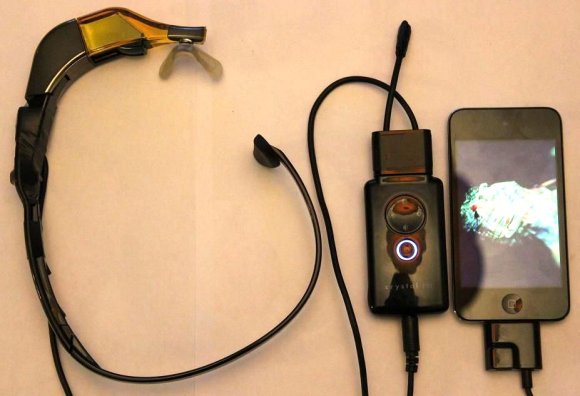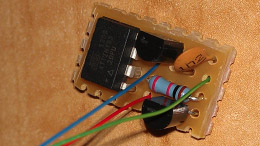
If you’re a follower of Apple hardware the upcoming Google Glass release probably doesn’t interest you much. But the concept is universally cool. If you want to have your own one-eyed voice-activated computer running iOS, then this is the hack for you. [John] calls it the Beady-i, and posted a step-by-step article on how he put it together.
The headpiece is shown on the left. It’s a combination of a pair of glasses with projection screens built-in, and a gaming headset. [John] cut off one of the lenses, and removed the remaining arm of the glasses. That arm was replaced with the frame of a gaming headset, which now wraps around the back of his neck to make sure the lopsided display isn’t going to fall off.
By combining the electronics from both the glasses and the headset, and terminating the connections with a docking plug he’s got what he was after. The lens displays what is shown on the screen, and the gaming headset lets him hear the device’s sound in one ear and register input using the microphone.












